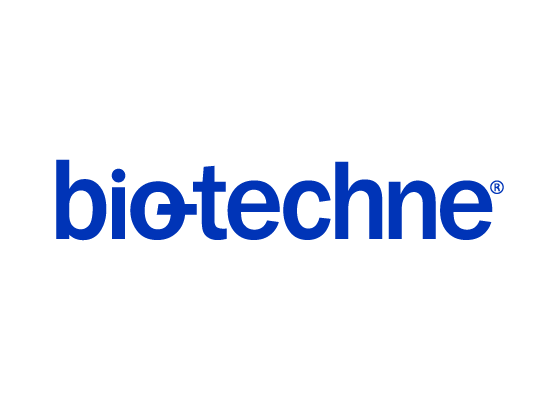Bovine IL-2 Biotinylated Antibody
R&D Systems, part of Bio-Techne | Catalog # BAF2465


Key Product Details
Species Reactivity
Applications
Label
Antibody Source
Product Specifications
Immunogen
Ala21-Thr155
Accession # P05016
Specificity
Clonality
Host
Isotype
Applications for Bovine IL-2 Biotinylated Antibody
Western Blot
Sample: Recombinant Bovine IL-2 (Catalog # 2465-BL)
Bovine IL-2 Sandwich Immunoassay
Formulation, Preparation, and Storage
Purification
Reconstitution
Formulation
Shipping
Stability & Storage
- 12 months from date of receipt, -20 to -70 °C as supplied.
- 1 month, 2 to 8 °C under sterile conditions after reconstitution.
- 6 months, -20 to -70 °C under sterile conditions after reconstitution.
Background: IL-2
Bovine Interleukin-2 (IL-2) is a 15 kDa, alpha-helical, single chain, potentially glycosylated polypeptide that has potent stimulatory activity for antigen-activated T cells (1‑5). The molecule is synthesized as a 155 amino acid (aa) precursor that contains a 20 aa signal peptide plus a 135 aa mature segment that is possibly O‑glycosylated (4, 5). The mature region has multiple alpha-helices and one intrachain disulfide bond. Mature bovine IL-2 is 64%, 60%, 49%, 50%, 72%, 63% and 67% to mature human, canine, mouse, rat, porcine, equine, and feline IL-2, respectively. Mammalian cells known to express IL-2 include CD4+ and CD8+ T cells, visceral smooth muscle cells, eosinophils, gamma delta T cells, B cells and dendritic cells. The receptor for IL-2 is complex and consists of three distinct subunits in varying combinations (6, 7). Two of these are ligand-binding and are termed IL-2 R alpha and IL-2 R beta. IL-2 R alpha is 55 kDa and binds IL-2 with low affinity. IL-2 R beta is 75 kDa and binds IL-2 with intermediate affinity. Signal transduction is performed by both IL-2 R beta and a 64 kDa common gamma chain ( gammac). This signal transducing common gamma chain does not bind IL-2, but does heterodimerize with IL-2 R beta to form a functional IL-2 receptor. The complex heterotrimeric alpha-beta -gamma c receptor may arise from IL-2 binding to preformed R alpha-R beta complexes (8). Functionally, IL-2 is best known for its autocrine and paracrine activity on T cells. It drives resting T cells into active G1, inducing IL-2 and IL-2 R alpha synthesis and cell proliferation (7). It also promotes Fas-induced death of naïve CD4+ T cells, while having minimal effect on activated CD4+ memory lymphocytes. Finally, IL-2 seems to play a central role in the expansion and maintenance of CD4+ CD25+ regulatory T cells. Thus, IL-2 may be a key cytokine in the natural suppression of autoimmunity (9, 10).
References
- Smith, K.A. (1992) Curr. Opin. Immunol. 4:271.
- Smith, K.A. (1988) Science 240:1169.
- Waldmann, T.A. et al. (2001) Immunity 14:105.
- Cerretti, D.P. et al. (1986) Proc. Natl. Acad. Sci. USA 83:3223.
- Reeves, R. et al. (1986) Proc. Natl. Acad. Sci. USA 83:3228.
- Ellery, J.M. and P.J. Nicholls (2002) Cytokine Growth Factor Rev. 13:27.
- Nelson, B.H. and D.M. Willerford (1998) Adv. Immunol. 70:1.
- Liparoto, S.F. et al. (2002) Biochemistry 41:2543.
- Jaleco, S. et al. (2003) J. Immunol. 171:61.
- Malek, T.R. (2003) J. Leukoc. Biol. 74:961.
Long Name
Alternate Names
Entrez Gene IDs
Gene Symbol
UniProt
Additional IL-2 Products
Product Documents for Bovine IL-2 Biotinylated Antibody
Product Specific Notices for Bovine IL-2 Biotinylated Antibody
For research use only